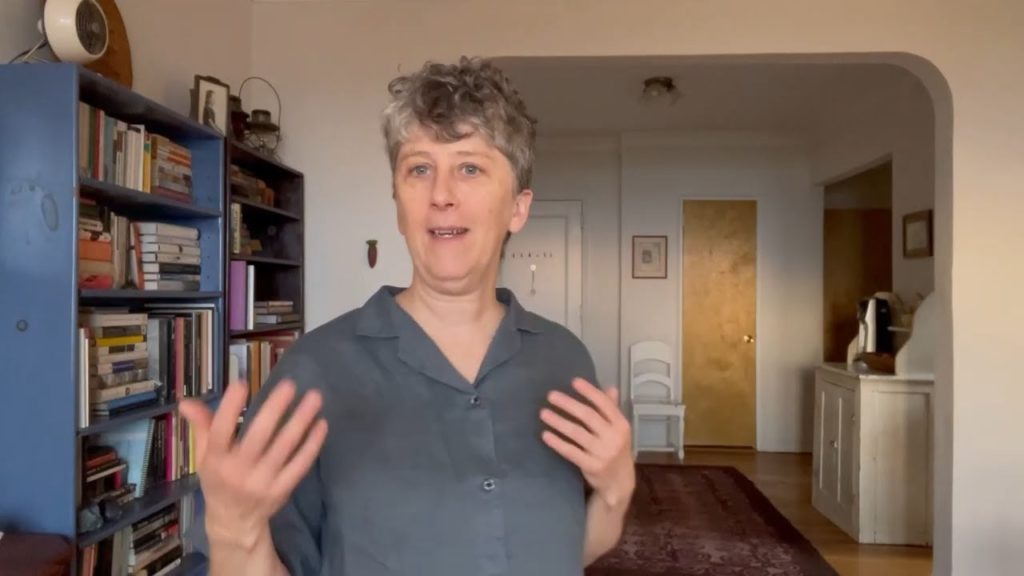Attending to quality of sound can boost your communication skills, help you stay with yourself, and understand others more easily.

Welcome to 2022! We will be continuing on our journey through the 12 cranial nerves, with one final post about the 8th cranial nerve. Over the break, I discovered a wonderful book that provides important context for this journey called “Turning Suffering Inside Out: A Zen Approach to Living with Physical and Emotional Pain” by Darlene Cohen.
This book explains why it’s important to develop sensory literacy and skill – to expand ones ability to experience all the sensory pleasures of life, and to amplify those experiences that bring joy. Here is what she has to say about what she calls “the disinterested pursuit of pleasure:”
“I think that if you are overwhelmed by emotional stress or physical pain, it is advisable to think about cultivating the ability to recognize pleasure wherever the potential for its existence may lie. I say this not because I am a thrill-seeking hedonist but because someone has to say it. Not so many Zen lecturers or stress reduction or arthritis teachers do, so I have to fill the breach.”
– Darlene Cohen
THE PLEASURE OF SOUND IS AN IMPORTANT PART OF LISTENING
Do you lose track of your body when listening to other people? Many of my clients over the years have been therapists who suffer from having to sit relatively still, listening, for long periods of time. Their sense of their own body fades into the background.
Chronic aches and pains are just one result of not feeling your own body; feeling burnt out and emotionally drained are another. Can we balance our abilities to hear and process meaning without loosing ourselves?
Yes you can! Consider a return to the simple pleasure of hearing sound. What is the quality of the sound? Is it high or low, tight or open, sharp or soft? No two sounds are exactly alike. Your ear is capable of perceiving incredible nuance and detail. Enjoy it. Be curious about the quality and tone of sounds in your space as well as the voice of your client.
HOW SOUND PERCEPTION WORKS
This is what a sound wave looks like:

Sound is a traveling, longitudinal wave that has a particular frequency, which we perceive as pitch. Humans perceive a limited range of sound between 20 hertz and 20 Kilohertz. Anything above 20 KhZ is called ultrasound, and anything below 20 H is called infrasound. Enjoy what you can hear, knowing that there is so much more! And if you are not a hearing person, you can still feel sound as vibration through your whole body.
The perception of sound in your ear has 6 layers:
- pitch (high or low)
2. loudness (volume),
3. duration
4. timbre (quality)
5. texture
6. spatial location.
When we hear sound, we are perceiving all of these elements at once, simultaneously. However, we can also choose to get curious about each one for it’s own sake. I have found surprising pleasure in choosing to hear the quality of someone’s voice in conversation. Even though I miss a few words, I gain what I have missed in pleasure!
This qualitative processing is the foundation of all higher levels of understanding. Our brain puts the qualitative information together with words, facial expressions, and body movement to produce “understanding.”
Listening to how someone speaks is called prosody. Prosody is essential to understanding meanings, but it is also profoundly embodied. Our bodies move in rhythmic response to the timing of another persons speech. Our faces flicker with expression and response before we have “consciously” understood someone.
BENEFITS OF QUALITATIVE AWARENESS OF SOUND
Qualitative awareness also helps us to stay in our own bodies, which are the source of the felt experience. That deepens our understanding of others. Online, we can’t rely on the body language of our clients or colleagues as much as we would in person. Sound becomes even more important.
Maintaining awareness of your own body and feelings helps you maintain healthy boundaries while listening empathetically. Attending to the spatial resonance of sound helps you maintain a sense of three dimensional space instead of getting sucked into the flat computer.
Finally, in my experience an open and curious “ear” helps my heart stay open to what is present. A curious ear is not busy pre-judging what is heard. An open mind is not busy formulating a response before the other person has completed their expression.
These are just a few of the gifts I’ve received from practicing and teaching Cranial Nerve Sequencing. Go HERE to find out more about it and how you can get started.
